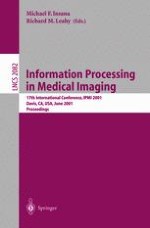2001 | Buch
Information Processing in Medical Imaging
17th International Conference, IPMI 2001 Davis, CA, USA, June 18–22, 2001 Proceedings
herausgegeben von: Michael F. Insana, Richard M. Leahy
Verlag: Springer Berlin Heidelberg
Buchreihe : Lecture Notes in Computer Science
Enthalten in: Professional Book Archive
